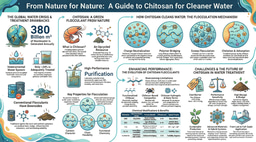Where architectural thermo-responsive windows shine
Published in Civil Engineering

It is probably hard to believe that windows, covering just 8% of a building’s surface, are responsible for 45% of thermal energy transmission through building envelopes and contribute to 8.6% of total energy use in buildings. That’s a staggering impact, especially considering buildings themselves account for 36% of global primary energy demand. In material science, the race to develop advanced, energy-saving window materials has never stopped. Smart window is a hot topic in research, with countless papers showcasing innovative materials that promise to revolutionize energy efficiency. But how close are we to realizing these bold claims?
Among the many types of dynamic windows, thermo-responsive windows are notable for their unique ability to adapt to temperature changes. Those windows automatically turn dark when it’s hot, and turn clear when it’s cold, thus better utilizing solar radiation and saving the heating and cooling energy. The key to their efficiency lies in a finely tuned transition temperature—aligning the solar heat gain with the building energy demand. Yet, previous research often leans on two questionable assumptions: first, that room temperature is the default optimal transition point, and second, that thermo-responsive windows are most effective in hot climates, where energy savings are presumed to outpace those in mixed or cold regions. Are these assumptions as solid as they seem?
In our recently published study, we conducted over 2.8 million simulations across more than 2,000 locations worldwide to delve into the energy performance of thermo-responsive windows. Our findings reveal that these dynamic windows are particularly beneficial in regions where both heating and cooling are essential, rather than in predominantly hot climates that rely mainly on cooling. In such warm areas, thermo-responsive windows with optimal transition temperatures tend to remain consistently dark, yielding energy performance comparable to that of comparable static tinted windows.
Interestingly, we also discovered that a room temperature of 25 °C (77 °F) isn't always the ideal transition temperature for these windows. The optimal transition temperature is influenced by a variety of factors, including the local climate, the specific type of window, building configurations, and notably, the intrinsic optical properties of the thermo-responsive materials—especially their solar transmittance in the clear state.
Untold Stories: The Research Journey
Our study began as part of a collaborative project with a national laboratory. They provided a thermochromic material, and our task was to evaluate its potential for improving building energy efficiency under different climatic conditions. Initially, we only simulated how this single material performed in three different climate zones. The results aligned with previous findings, indicating that energy savings were greatest in tropical regions. However, we did not stop there. In a departure from past approaches, we greatly expanded the range of the phase transition temperatures, and ultimately overturn what had long been considered a well-established conclusion. We then leveraged machine learning techniques to transform our scattered, discrete results from locations around the world into a visually continuous global map—an outcome not easily achieved through conventional methods.
What sets this study apart from previous material research is its objective, unified evaluation of the necessity for different materials. While earlier studies tended to focus on a single material and highlight its advantages in a specific parameter over other materials, our work takes a broader view, providing a consistent assessment that encompasses a range of materials and their relative importance. Sometimes, demonstrating that a material or technology is not well-suited for an application is itself a significant scientific contribution, as it prevents the unnecessary waste of materials and human resources.
Take home message
There’s no one-size-fits-all solution for thermo-responsive windows. In fact, our findings show that thermo-responsive windows aren’t always necessary in most hot climates. However, when the material properties are carefully selected and the building locations are thoughtfully chosen, thermo-responsive windows can deliver real energy savings. High clear-state solar transmittance, for example, can boost efficiency and shift the ideal transition temperature. To help researchers and designers navigate these nuances, we introduced simple metrics and a mapping tool, making it easier to pinpoint where and how nuances windows truly shine.
Follow the Topic
-
Nature Communications

An open access, multidisciplinary journal dedicated to publishing high-quality research in all areas of the biological, health, physical, chemical and Earth sciences.
Related Collections
With Collections, you can get published faster and increase your visibility.
Women's Health
Publishing Model: Hybrid
Deadline: Ongoing
Advances in neurodegenerative diseases
Publishing Model: Hybrid
Deadline: Dec 24, 2025


Please sign in or register for FREE
If you are a registered user on Research Communities by Springer Nature, please sign in